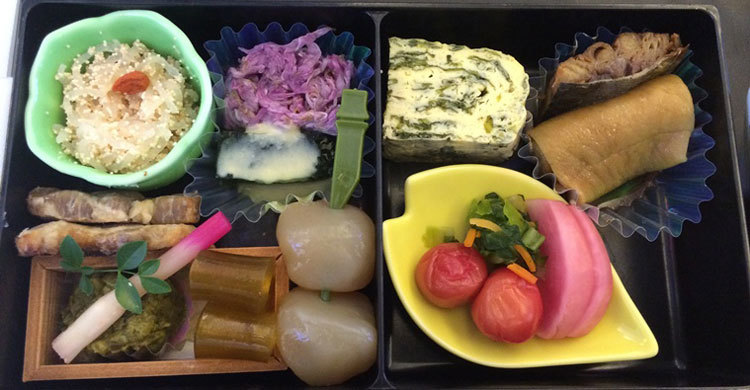Do you really want to bother with your tray tables?

I’d rather not be reminded of airline food, especially the food served, of late, on Jet Airways. But for the purposes of this article, I will exhume long-buried memories, and recall two interludes that made the flying time seem a lot longer than it actually was. Sometime ago, on a flight to Coimbatore, the passengers were handed out some sort of Thai chicken curry wraps.
My wrap tasted like regurgitated ear wax, and the moment I landed in Coimbatore, I headed straight to Junior Kuppanna and had a spicy chicken pallipalayam along with some wheat dosas to rid my mouth of the offensive taste.
Another time, on an early morning flight from pointlessness A to pointlessness B, the dish on my tray table provided me with an answer to the age-old question regarding the chicken and the egg.
It is the egg that came first, and I’m certain it was specifically the leaden omelette that was served to me on that flight.
It would be, of course, unfair to single out Jet Airways - airline food across the world on all manner of airlines is as depressing as red-eye flights, layovers and the unmasking of Anupam Kher.
The dreary fare is not restricted to just economy class. Stints in automobile and lifestyle magazines - in which you fly around the world, mostly at the pointy end of aluminium tubes, generally write nice things about nice things, and acquire, on someone else’s money, an opinion on flat beds, priority check-in and premium lounges - have made me extremely sceptical of ever eating a good meal 35,000-feet above MSL.
Amidst the plastic smiles and the deteriorating quality of designer business class pyjamas, there have, however, been a few stand-outs: veal sausages on Swiss Air; an artfully arranged Japanese meal on All Nippon Airways; and an eggplant moussaka on Turkish Airlines.
Apparently, and airlines love to reiterate this, the fault doesn’t lie with the preservative-laden food served on their flights. Instead, we are to blame. In particular, our taste buds and olfactory sensors don’t really perform up to scratch in noisy, pressurised cabins.
The only things that taste nearly as good as they do back on earth, according to food scientists at Cornell, is stuff rich in umami, such as tomato juice, and consequently Bloody Marys.
I once visited the catering facility of a major southeast Asian airline and spent some time in a pressurised chamber - and, I suspect, ended up getting jet-lagged without actually flying anywhere - to get a better understanding of the link between altitude, noise and underwhelming food.
While a lot of what the airlines say is valid, there was a less complicated time when travellers enjoyed food much more than we do today. Or, it at least appears to be so, and there are some delicious references to it in Alexander Frater’s Beyond the Blue Horizon (1986).
Frater, who also authored the travel classic Chasing the Monsoon (1990), retraces the route of the legendary Imperial Airways Eastbound Empire service from London to Brisbane. Back then, it took two weeks to get to Brisbane from London, by way of Europe, Egypt, the Far East, India and South Asia. Aircraft only flew during the day, and there were over 30 scheduled way stops.
The mind boggles at what flyers back then would have partaken of at all those exotic cities at which the aircraft halted. It must have been worth all that turbulence and clatter. And it’s not as if the food served on board was any less appetising.
Breakfast on the Handley Page HP42 to Paris, from Croydon, in the 1930s, writes Frater, included fresh grapefruit, shredded wheat or grape nuts, cold galantine of veal, sausages and tomatoes, or a full mixed grill.
‘In the early days of Imperial, when Paris was still served by thundering three-engined Argosies with open cockpits, the stewards were expected to buy the provisions themselves. First thing each morning they went shopping in Croydon market for eggs, fruit, bread and salad. Then, they caught a bus back to the aerodrome where, at a small stove and sink in the Accounts section, they prepared the salads, hardboiled the eggs and filled Thermos flasks with coffee and tea. But not everyone appreciated their efforts. The Armenian millionaire Nubar Gulbenkian, a Paris regular, always brought his own supplies and a primus stove, and a valet who was dispatched to the ship’s galley to prepare a light lunch of consomme and creamed chicken.’
Even as recently as the 1960s (the so-called golden age of aviation, though it was also way more blatantly racist and sexist than it is today), long-haul flights often had meat being carved and served in the aisle. According to history.com, the ’60s were the halcyon days of food on airlines.
‘Airlines prided themselves on the quality of their food and drinks. One first-class trip from Los Angeles to Paris on the now defunct TWA featured Beluga caviar, Nova Scotia salmon and 36 different drink choices. The meal ended as the plane began its sunrise descent over the Seine.’
Then, in 1967, came along the world’s first low-cost carrier (the Dallas HQ-ed Southwest Airlines); the Oil Crisis of the 1970s, the Gulf War, 9/11 and the economic downturn in 2008, and what we are left with is a packet of pretzels, or a Thai chicken curry wrap.
The future, too, doesn’t look very promising. According to The Economist, among the measures Spice-Jet, which faced rough weather a couple of years ago, took to claw its way back into black, included serving food in cardboard boxes instead of plastic trays, in an effort to reduce the weight of their aircraft and consequently save fuel. Which is all well and good, but Jet has been way ahead of the curve: they have, I suspect, been serving us cardboard all along.


